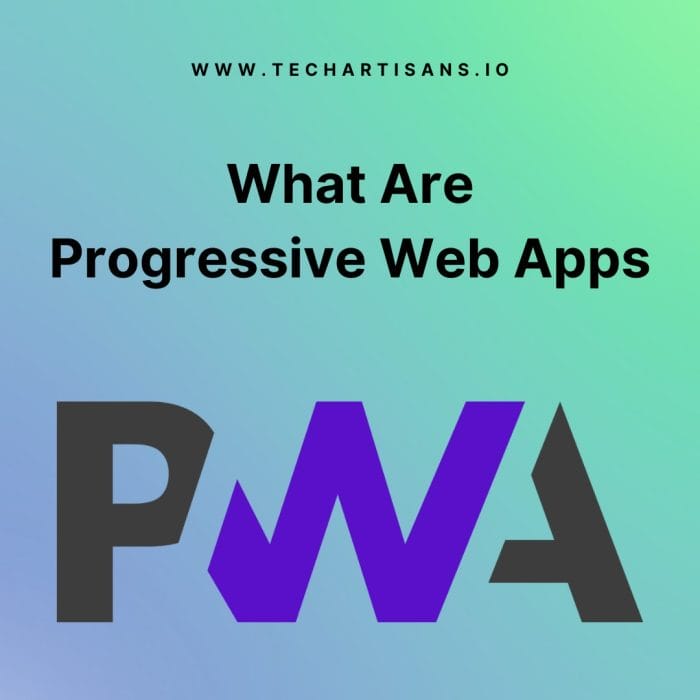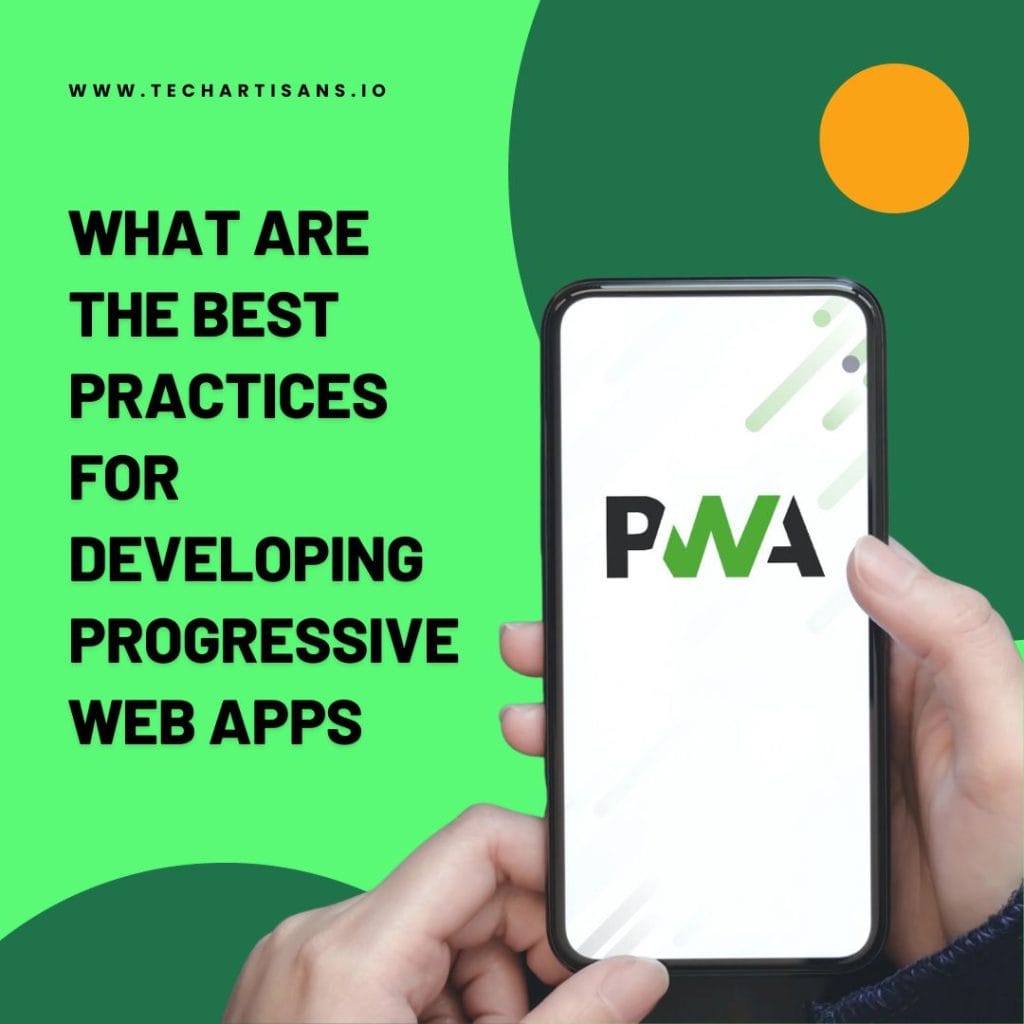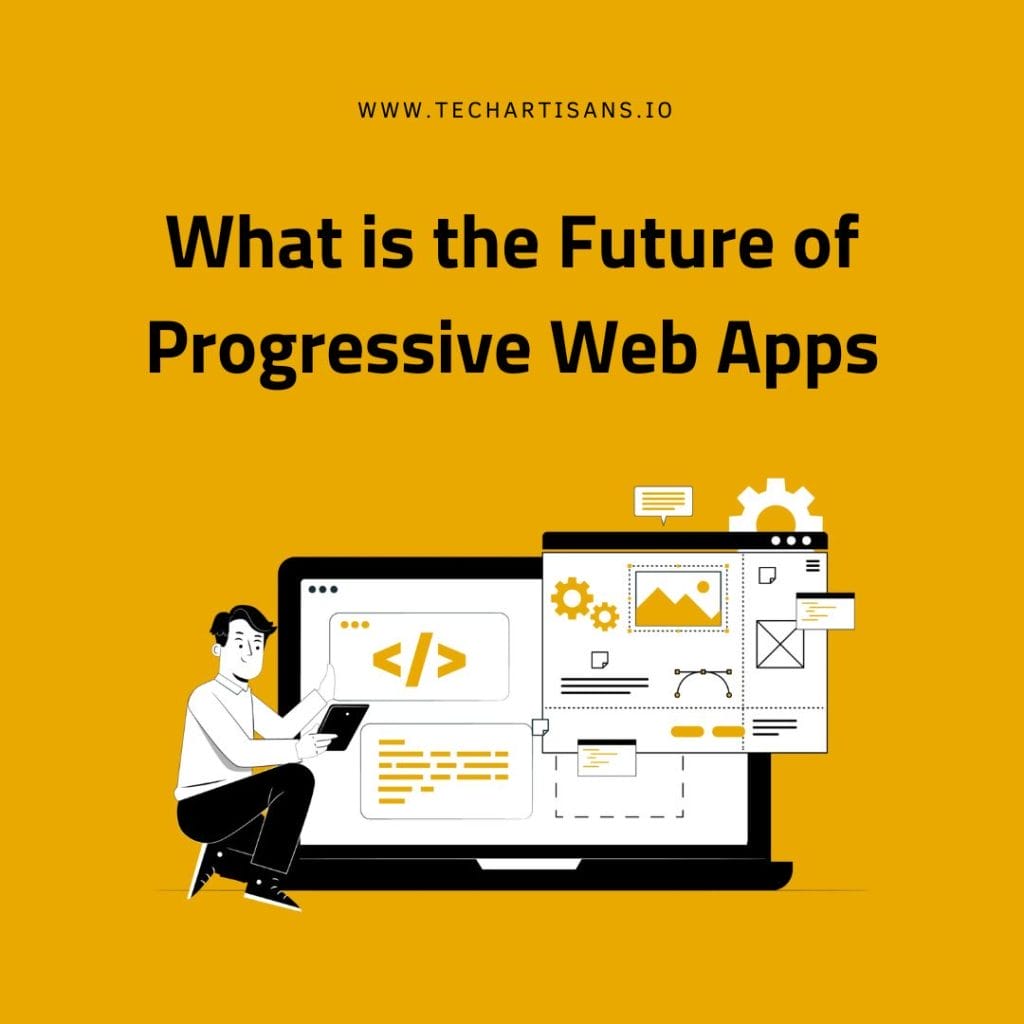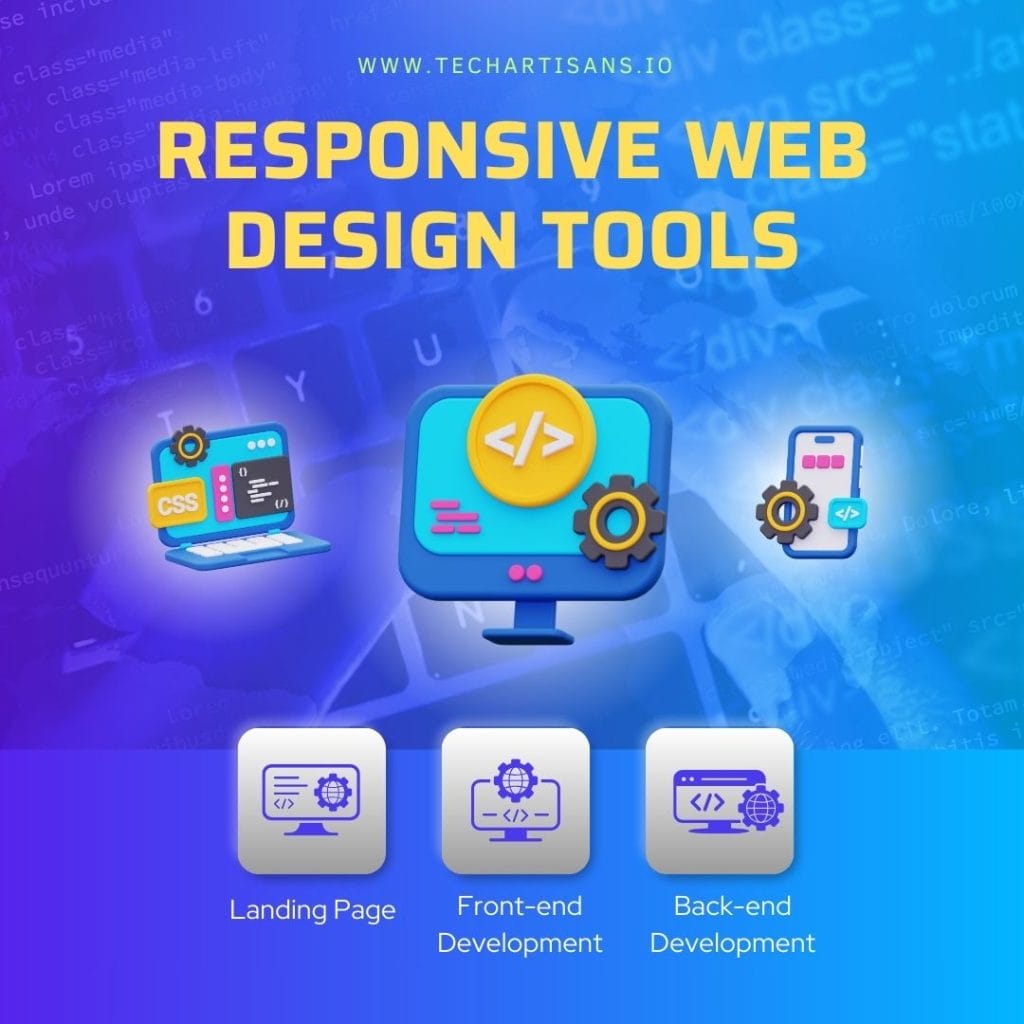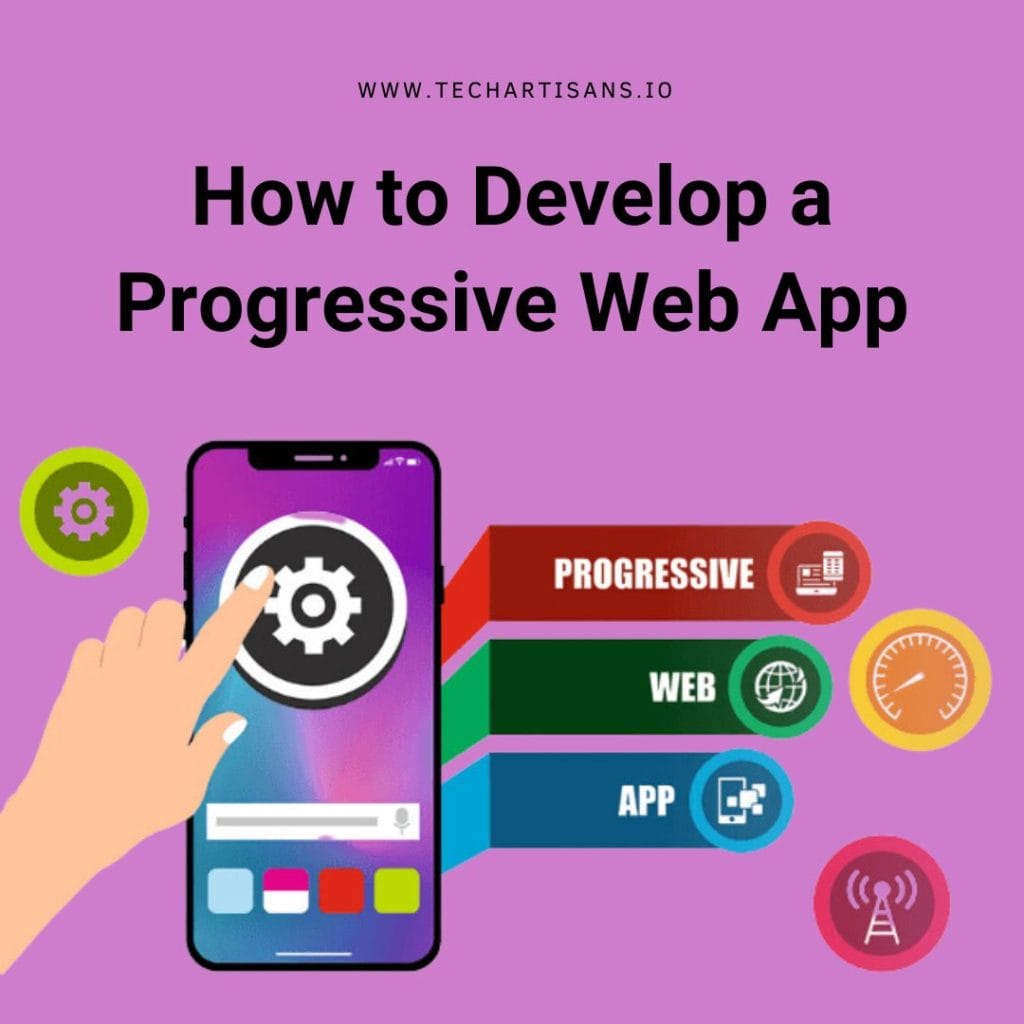Progressive Web Apps (PWAs) are the next big leap in the digital landscape, especially for small to medium businesses striving for superior user experiences. Imagine a web experience as agile and responsive as a native app; that’s what PWAs bring to the table. With a PWA, you’re getting the best of both worlds: the full functionality of a traditional app paired with the wide reach of the internet. For businesses grappling with responsive web design, PWAs offer a solution that may redefine your digital strategy.
The Evolution of Web Apps
Embarking on a journey through the evolution of web apps, we witness a fascinating transition from static web pages to the dynamic, user-centric, Progressive Web Apps of today. Let’s dive deep into the transformation that has refined the world of web design and catalyzed the rise of PWAs.
History Of Web Applications
The inception of web applications traces back to the 90s with static HTML pages. Over time, these evolved into dynamic, server-based applications, enhancing user interaction and data manipulation. The introduction of AJAX in the early 2000s brought about a revolution, enabling smoother and faster web experiences. The advent of Progressive Web Apps (PWAs) marks the latest significant milestone in this journey, setting new standards for responsive web design.
Transition From Native Apps To PWAs
The shift from native apps to Progressive Web Apps signifies a major turning point in the digital realm. PWAs offer the same interactive and high-performance experience as native apps, while overcoming their limitations of platform dependency and installation procedures. This transition marks a significant step forward, enhancing web accessibility and user experience with responsive web design.
Core Technologies Behind PWAs
Delving deeper into the mechanics of Progressive Web Apps, it’s crucial to understand the core technologies that power them. These technologies set the foundation for the responsive and dynamic behavior that characterizes a PWA, enabling businesses to provide a seamless, app-like experience on the web. Let’s unfold the key technologies behind PWAs and how they contribute to an enhanced user experience.
Service Workers
Service workers serve as the backbone of Progressive Web Apps, operating as a network proxy in the web browser to manage web requests programmatically. They play a vital role in enabling features like offline functionality, background updates, and push notifications, significantly improving the responsiveness and overall user experience of your web application.
Web App Manifest
The Web App Manifest is a crucial component of a Progressive Web App that instructs the browser about how your app should behave when installed on a user’s device. It’s a simple JSON file that controls how your app appears to the user, how it’s launched, and how it runs, making PWAs feel more like native applications.
Application Shell Architecture
The Application Shell Architecture is another fundamental technology underpinning Progressive Web Apps. It serves as the structural framework of a PWA, providing the basic user interface and navigation experience. Much like the shell of a native app, this architecture is loaded onto the device once and then reused for every subsequent visit.
Key Features of PWAs
Progressive Web Apps boast features that set them apart from traditional web and native applications, emphasizing their appeal to businesses and users. These key features, which we’re about to delve into, contribute to the blend of web accessibility and native-like experience that defines PWAs.
Responsiveness and Cross-Browser Compatibility
PWAs exemplify the pinnacle of responsive web design, adjusting seamlessly to fit any form factor: desktop, mobile, or tablet. Their cross-browser compatibility ensures that they function smoothly on any browser, be it Chrome, Firefox, Safari, or Edge, delivering a consistent and high-quality user experience.
Offline Capabilities and Network Independence
One of the standout features of PWAs is their ability to function even in offline scenarios or in areas with low network connectivity. Leveraging service workers, Progressive Web Apps can cache key resources, enabling the app to run seamlessly and provide a consistent user experience, independent of network conditions.
App-like Interface and User Experience
Progressive Web Apps mimic the look and feel of native apps, providing an immersive, app-like user interface. They offer smooth navigating experiences, fast load times, and the ability to work offline, all contributing to a high-quality user experience that meets the expectations of today’s savvy web users.
Advantages of PWAs for Business
In the rapidly evolving digital landscape, Progressive Web Apps (PWAs) offer many advantages for businesses, particularly for small to medium enterprises seeking a cost-effective, efficient, and user-friendly web presence. Let’s delve into how PWAs can enhance your business’s digital strategy.
Cost-Effectiveness
PWAs offer remarkable cost-effectiveness that can especially benefit small and medium-sized enterprises. Unlike traditional apps, a PWA does not require separate versions for different platforms, such as iOS and Android. This results in significant savings in development, maintenance, and update costs.
No App Store Requirements
Progressive Web Apps circumvent the need for app store submissions, eliminating the approval processes and update delays typically associated with traditional app stores. This allows for direct updates to your PWA, ensuring your users always have access to the latest version.
Improved Performance and User Engagement
Progressive Web Apps (PWAs) are renowned for their speed and performance. They leverage service workers and effective data management strategies to load content swiftly, even under poor network conditions or offline. This leads to faster page-load times, smoother navigation, and an overall high-performing application.
Real-World Success Stories
Several instances of businesses experiencing impressive results after implementing Progressive Web Apps. The following success stories underscore the potential of PWAs to dramatically improve user engagement and business outcomes.
Starbucks
Starbucks, a global coffeehouse chain, adopted a Progressive Web App to provide its customers with a seamless online ordering experience. Their PWA offers an interactive menu, allowing customers to customize their orders and add items to their shopping cart, even in offline mode. This has reportedly doubled their online order rate, demonstrating the potential of PWAs to significantly boost customer engagement and sales.
Pinterest, a leading social media platform, adopted a PWA to overcome the challenges they faced with their earlier mobile web experience. The Pinterest PWA resulted in a 60% increase in core engagements, with a 44% rise in user-generated ad revenue and a 50% increase in ad click-throughs. The time users spent on the Pinterest PWA was also 40% higher than on their previous mobile website, effectively showcasing the impressive engagement capabilities of PWAs.
Forbes
Forbes, a renowned business magazine, introduced a PWA to provide a more engaging, app-like user experience. The result was a 43% increase in sessions per user, and ad viewability rose by 20%. Users spent more time on the Forbes PWA than their previous mobile platform, demonstrating how PWAs can dramatically boost user engagement and retention.
Uber
Uber developed its PWA, ‘m.uber,’ to ensure their service could be accessed in all locations, even with slow or unreliable internet connections. The PWA is designed to be fast and efficient, capable of running on 2G networks. This has enabled Uber to extend its reach and offer reliable service to users regardless of their network conditions, showcasing the network resilience of PWAs.
These real-world examples illustrate how Progressive Web Apps are helping businesses across various sectors boost engagement, improve user experience, and reach a wider audience. The adoption of PWAs could indeed be a game-changer for companies seeking to maximize their digital potential.
How To Build a PWA
Embarking on your journey to build a Progressive Web App (PWA) is a strategic move for enhancing your digital presence, driving user engagement, and broadening your reach. This section will walk you through the essential steps in creating a PWA, transforming your vision into a high-performing, user-friendly application that can effectively cater to your business needs.
Technical Requirements
To create a PWA, there are several key technical requirements. Firstly, your site must be served over HTTPS to ensure secure data transfer. Secondly, a Web App Manifest and a Service Worker are needed for the app to be installable and to work offline, respectively. Lastly, the site should be responsive, adapting its layout to various device and viewport sizes.
Steps To Convert a Web App Into a PWA
Step 1: Integrate Service Workers
First, implement service workers into your web app. Service workers operate in the background, managing requests and caching resources to ensure your web app works offline and loads quickly.
Step 2: Create a Web App Manifest
Next, develop a Web App Manifest – a JSON file that provides essential details about your app. It specifies app icons, display modes, and the home screen name, which helps in full-screen display and home screen installation.
Step 3: Implement HTTPS
Transition your web app to HTTPS from HTTP. HTTPS ensures secure data transmission and is critical for PWAs as service workers can intercept network requests and modify responses.
Step 4: Test Your PWA
Finally, use a tool like Lighthouse to test your PWA. It checks for service worker registration, web app manifest presence, and other critical PWA features. It also provides an overall performance score and suggests areas for improvement. By following these steps, you can transform your web app into a progressive web app.
Challenges and Considerations
While adopting Progressive Web Apps (PWAs) can offer numerous benefits, it’s essential to understand the challenges and considerations involved in implementing this technology. The following section will discuss some potential obstacles and critical aspects to ponder when deciding to leverage PWAs for your business.
Limitations of PWAs
Despite their many benefits, PWAs do have some limitations. Notably, they may lack full functionality on certain platforms, there can be issues with browser compatibility, and they don’t always have access to all device features, such as advanced camera controls or Bluetooth.
Strategic Considerations For Businesses
Businesses considering PWAs must strategically evaluate their target market’s technology use, the necessary resources for development and maintenance, and the potential Return on Investment (ROI). It’s also important to bear in mind the impact of the PWA on existing channels and the overall customer experience.
Future of PWAs
The landscape of digital engagement is constantly evolving, and Progressive Web Apps (PWAs) are poised to play a significant role in shaping the future of this domain. Let’s explore the potential advancements and trends we can expect in PWAs.
Trends and Predictions
In the coming years, we predict a surge in PWA adoption by small and medium businesses to enhance their mobile web experience. We can also expect advancements in PWA features, closing the gap with native apps. Increased integration with emerging technologies like AI and VR will further extend the capabilities of Progressive Web Apps.
Role of PWA In The Future of Web Development
As we venture further into the digital age, Progressive Web Apps (PWAs) are set to redefine the future of web development. Their seamless performance across various platforms, coupled with offline capabilities and superior user experience, positions PWAs as a transformative force in web development, bridging the gap between web and mobile apps.
Conclusion
Progressive Web Apps (PWAs) are revolutionizing the digital landscape, offering businesses a potent tool for improving user engagement, enhancing the mobile web experience, and extending reach. Given their transformative potential, it’s essential for businesses, especially small to medium enterprises, to consider integrating PWAs into their digital strategy. It’s time to embrace the future of web development with PWAs and unlock new opportunities for growth.

